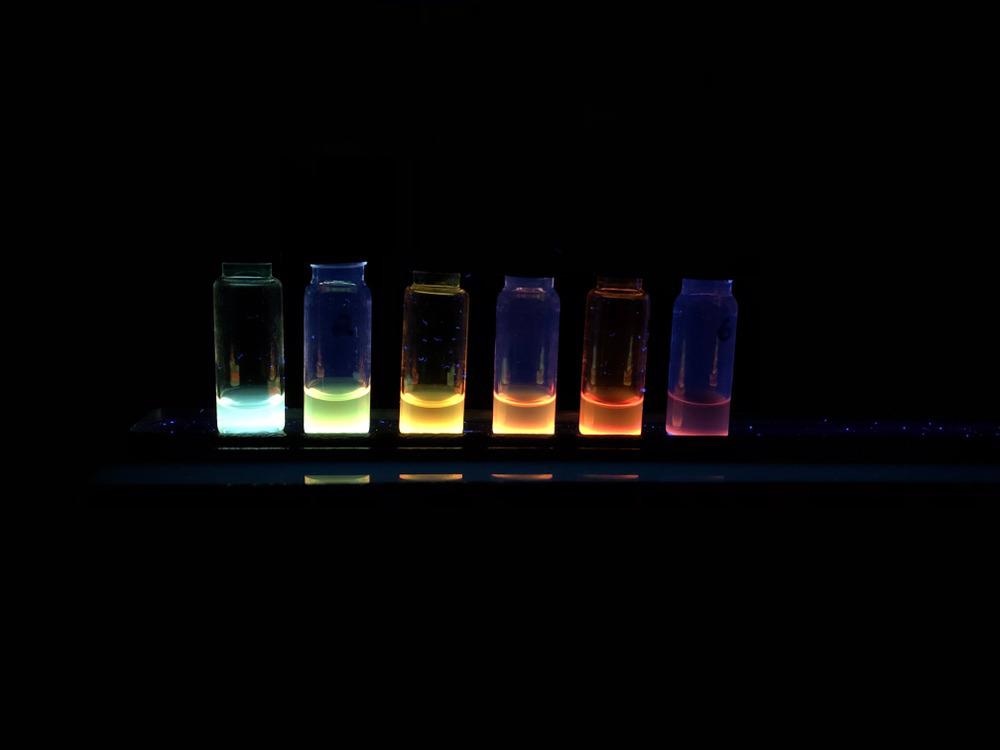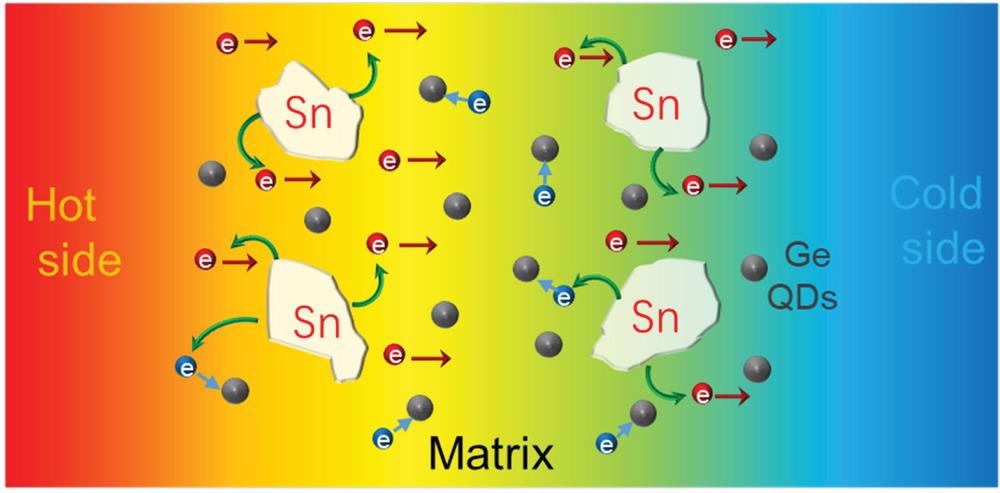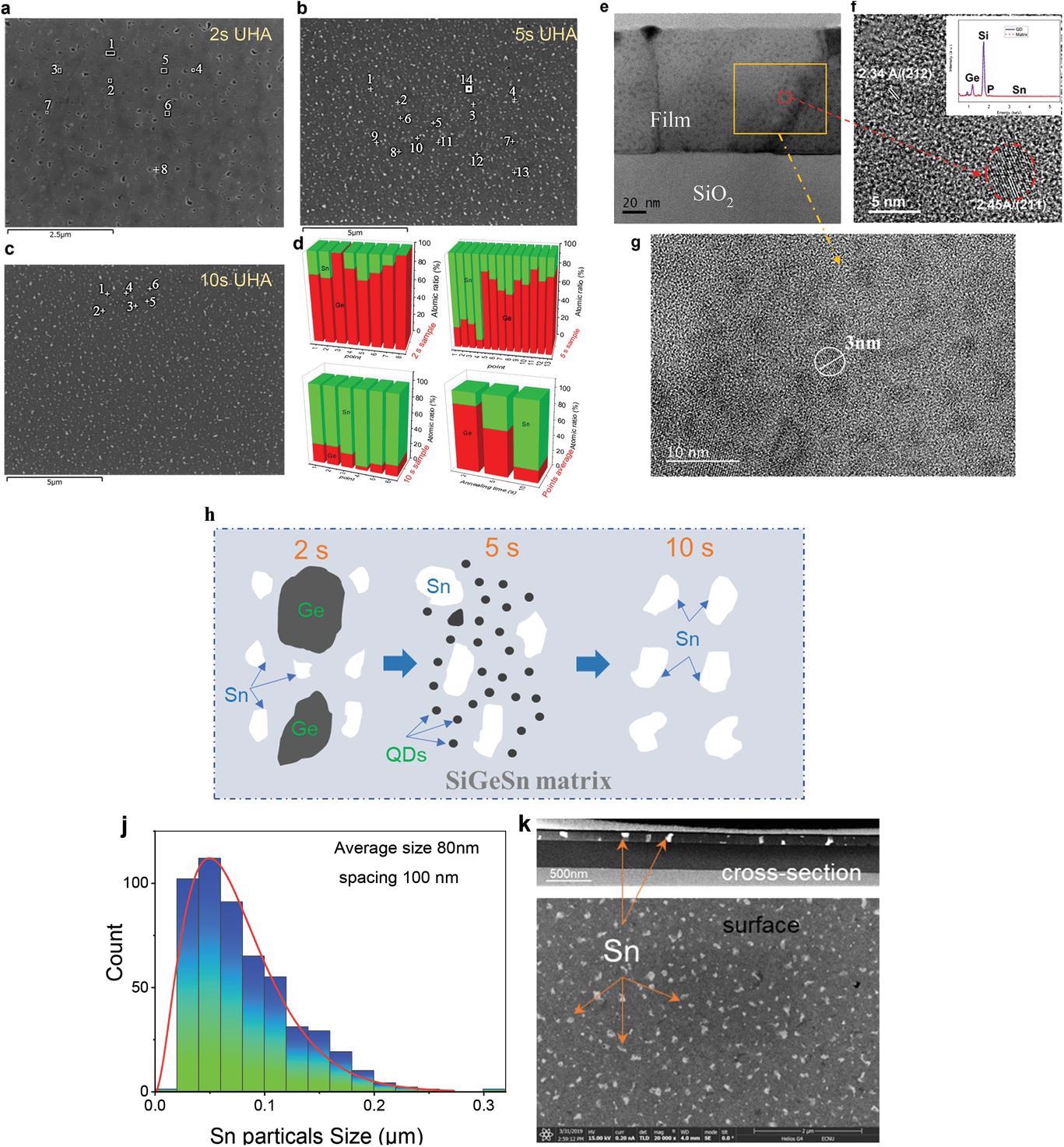Researchers in Japan and Korea have recently developed a hybrid system made up of quantum dots (QDs) with fine parameters that could be a strong candidate for improving the performance of thermoelectric materials in the low-temperature region.

Study: Constructed Ge Quantum Dots and Sn Precipitate SiGeSn Hybrid Film with High Thermoelectric Performance at Low Temperature Region. Image Credit: gurps1998/Shutterstock.com
Published in the journal Advanced Energy Materials, the researchers claim they have fabricated a high-performance n-type thermoelectric material based on SiGeSn QDs hybrid nanostructure. The work could have broad implications in the field of energy harvesting as well as opening up the application potential for thin films in low-temperature applications.
Throughout the study, the team determine the device’s figure of merit (ZT) i.e., its performance relative to its alternatives: “the power factor of our QDs hybrid film exhibits is superior to that of conventional silicon-based, bismuth telluride based, and other representatives high-performance thermoelectric films,” says Dr. Lei Miao of Faculty of Engineering Shibaura Institute of Technology, Japan.
Thermoelectric Materials
Thermoelectrics are a class of materials that have the capacity to transform heat energy directly into electrical energy, by manipulating the thermal energy carried by charges (electrons and holes). This energy conversion process is also highly reversible; thermoelectric materials can be used for technological applications such as carbon reduction, waste heat recovery, solid-state thermal management, and solar energy harvesting
Currently used in applications ranging from thermocouple sensors to solar power generators, thermoelectrics is also feeling the benefits of advanced being made in nanotechnology. The efficiency of thermoelectric power generators is established by the aforementioned nondimensional ‘figure-of-merit’ – ZT=S2σT/k – where S is the Seebeck coefficient, σ the electrical conductivity, k the thermal conductivity, and T the absolute temperature.

Schematic diagram of energy filtering and modulation doping in SiGeSn hybrid film, the matrix is the SiGeSn film, Ge QDS and Sn precipitation particles are evenly distributed in the matrix and the heat is transferred from the hot end to the cold end in-plane direction. Image Credit: Peng, Y et al., Advanced Energy Materials
Efforts to increase thermoelectric performance center around increasing the electrical properties S2σ, or decreasing the thermal conductivity. Typically, thermoelectric materials operate in the high-temperature region, however, the team was able to demonstrate “excellent ZT values of at room temperature, which is amongst the highest ever reported Si-based thin film and nanowires,” says Miao.
High-Performance Thermoelectric Materials
In order to fabricate the hybrid films, the team applied an ultrafast high-temperature annealing (UHA) process. The team then evaluated various samples that had been subjected to different annealing times in order to assess the ‘figure of merit’ and overall performance of the films.

Microstructure observation and evolution analysis of thin films. a–c) Surface SEM images of 2, 5, and 10 s UHA Si0.844Ge0.105Sn0.051 samples. d) Comparison of Ge and Sn content detected by EDS in 2, 5, and 10 s UHA samples. e–g) High-resolution TEM image of a cross-section of 5s-UHA sample. h) Schematic diagram of the evolution of Ge and Sn nanoparticles. j,k) Surface and section SEM image with a histogram of Sn particle size of 5s-UHA sample. Image Credit: Peng, Y et al., Advanced Energy Materials
For the purpose of developing high-performance thermoelectric materials at a low-temperature range, the team specifically measured the thermoelectric performance of the annealed SiGeSn hybrid films as a function of the measured temperature. Employing X-ray diffraction (XRD) the researchers were able to characterize the SiGeSn QDs hybrid films.
Across the results, the interplay between size and density of QDs and Sn content influenced the overall power factor of the films while applying a UHA treatment could produce films that demonstrate remarkable thermoelectric properties.
Overall, the researchers were able to show that there is a potential pathway to approach the composition effect of energy filtering and modulation doping for achieving the “largest PF and highest ZT” for a thin film reported at 300K, i.e. ambient room temperature.
The application of thermoelectric advanced thin films in energy harvesting means that devices could in fact harvest waste energy they produce in order to maintain a circular energy system that could in effect produce energy without using fossil fuels. Given the potential for use in solar energy conversion, thermoelectric materials are excellent candidates for alternative energy strategies and carbon reduction.
Disclaimer: The views expressed here are those of the author expressed in their private capacity and do not necessarily represent the views of AZoM.com Limited T/A AZoNetwork the owner and operator of this website. This disclaimer forms part of the Terms and conditions of use of this website.
Source:
Peng, Y., Miao, L., Liu, C. Y., Song, H., Kurosawa, M., Nakatsuka, O., Back, S. Y., Rhyee, J. S., Murata, M., Tanemura, S., Baba, T., Baba, T., Ishizaki, T., Mori, T., Constructed Ge Quantum Dots and Sn Precipitate SiGeSn Hybrid Film with High Thermoelectric Performance at Low Temperature Region. Adv. Energy Mater. 2021, 2103191. https://onlinelibrary.wiley.com/doi/10.1002/aenm.202103191